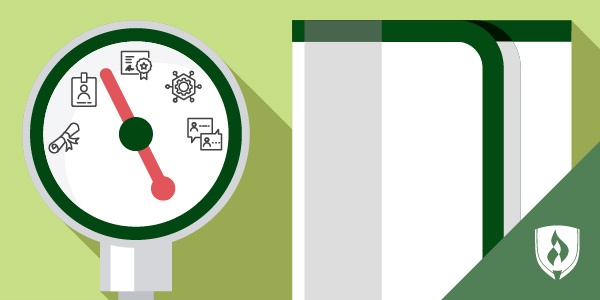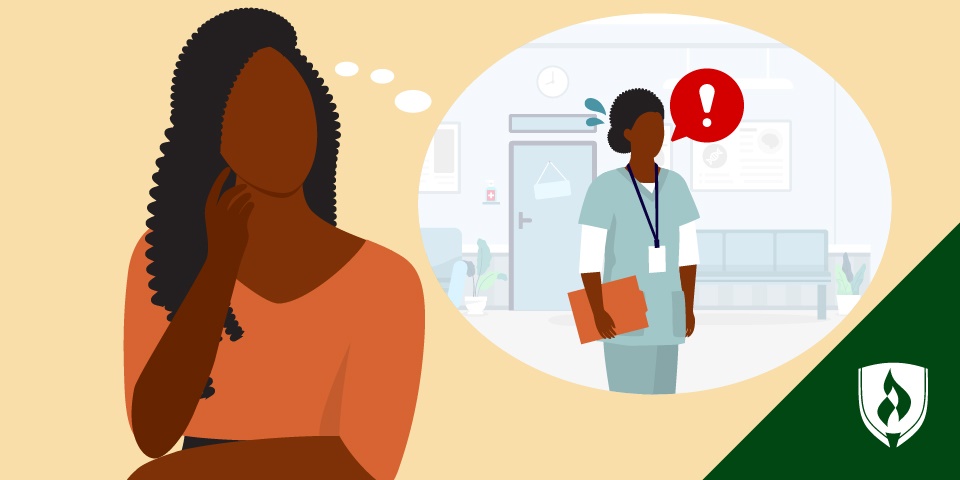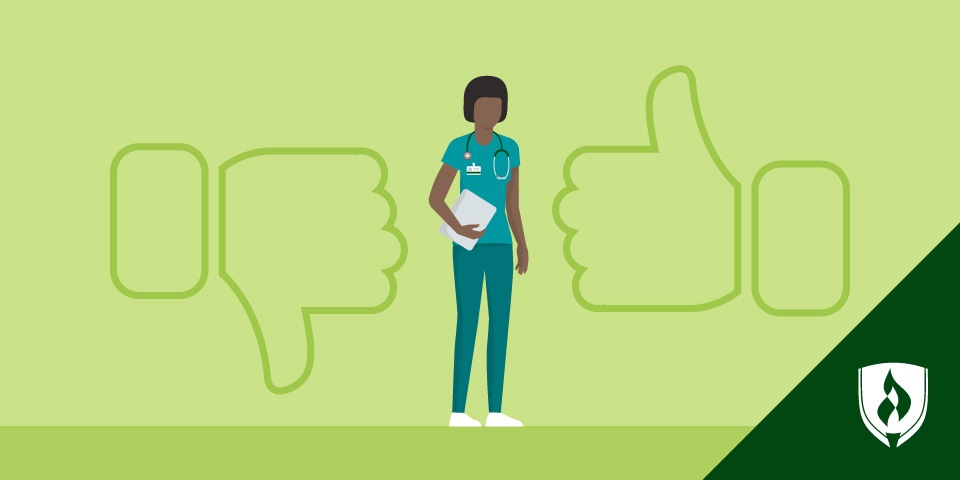
If you’re not very familiar with the variety of healthcare jobs out there, it’s easy to assume the people you run into on a visit to the clinic are all either doctors or nurses. But now that you’re really digging into it, you’re starting to realize there are many other job titles, which can make things confusing.
When comparing medical assistants versus patient care technicians, for example, most people don’t understand how these roles differ. If you’re interested in working closely with patients to help improve their health, these are both rewarding options.
But in order to choose which healthcare career best aligns with your skills and interests, you’ll want to have a detailed understanding of the each role. Use this side-by-side comparison to help you decipher the differences between a medical assistant and a patient care technician.
Medical assistant vs. patient care technician: Job duties
The clearest way to draw a distinction between these roles is to focus on their overall job duties. You’ll find that while some of these direct patient care duties may overlap, medical assistants often take on administrative work as well.
What does a medical assistant do?
A medical assistant (MA) is trained in both clinical and administrative work, with responsibilities in both the exam room and the front office. The clinical side of medical assisting involves recording vital signs, compiling patients’ medical histories and administering medications under the direction of a supervising physician. Administrative duties include greeting patients, scheduling appointments, adding patient information to electronic health records systems and assisting patients in completing insurance forms.
What does a patient care technician do?
A patient care technician (PCT) is mainly focused on working closely with patients, in conjunction with nurses. PCTs help perform basic care for patients, such as assisting them in using the restroom, serving meals or changing bedding. They may also monitor vital signs and provide emotional support to patients and families.
Medical assistant vs. patient care technician: Skills needed
With those duties in mind, what does the skillset of a successful MA or PCT look like? We used job posting analysis software to examine thousands of medical assistant and patient care technician job postings and identify some of the top skills employers were seeking. Here’s what we found.
Top skills for medical assistants:1
- Patient care
- Vital signs measurement
- Scheduling
- Cardiopulmonary resuscitation
- Injections
- Electronic medical records
- Phlebotomy
- Electrocardiogram
- Patient preparation
- Customer service
Top skills for patient care technicians:2
- Patient care
- Phlebotomy
- Activities of daily living (ADL) assistance
- Vital signs measurement
- Patient assistance
- Patient and family education
- Cardiopulmonary resuscitation (CPR)
- Dialysis
- Patient observation
- Patient and personnel interaction
Medical assistant vs. patient care technician: Education requirements
The medical field hosts a variety of careers featuring a whole spectrum of educational requirements—some of which can be pretty substantial. The good news for those who are looking to launch a healthcare career quickly is that the paths to becoming a medical assistant or a patient care technician are both relatively short.
While medical assistants aren’t technically required to earn a college degree, most complete some type of postsecondary program, according to the Bureau of Labor Statistics (BLS).3 The Rasmussen University Medical Assisting Diploma program, for example, can be completed in as few as 12 months.4
To become a PCT, you’ll need to have a high school diploma and complete a training program, according to the BLS.3 After completing a training program, or acquiring equivalent work experience, you can then become a certified patient care technician/assistant (CPCT/A) by passing an exam. Once employed, you’ll likely be required to undergo some sort of on-the-job training as well.
Medical assistant vs. patient care technician: A day in the life
As an MA, your duties generally begin when you check a patient in, and end when you help them schedule their next appointment. In between, you may lead patients to the exam room, register vital signs and record medical history. Some medical assistants also administer injections or medications, depending on the state in which you practice.
After patients have been seen by the nurse or physician, you may be responsible for explaining medications or drawing blood for testing. Location and hours depend on where you choose to work. The BLS reports that a majority of MAs work in physicians’ offices, meaning they generally have regular, 9–5 work hours.3
PCTs don’t have as many behind-the-scenes duties as MAs. Your primary focus would be on your patients, under the supervision of nursing staff. Your duties would largely depend on individual patient needs.
Saul Pimentel, patient coordinator (another name for a PCT) at Marina Del Rey Hospital, starts each day by printing schedules and bringing them to the front desk. “By then, several departments are waiting for me to transport patients, so I run to the CT scan, MRI, nuclear medicine, ultrasound and radiology [departments] to catch up on patient transportation,” Pimentel says.
The rest of Pimentel’s day involves making beds, helping nurses lift and clean patients, answering phones and scheduling appointments. “Whatever needs doing; I jump in and help,” he says. “And, of course, I love making people smile throughout the day.”
Both MAs and PCTs can be found in many different healthcare settings. April Estrada is a home hemodialysis PCT. “I work with the patients that do their treatments at home and train them (and their caregivers) to be able to do so,” she says. Estrada prepares the treatment area, trains patients on how to do everything once they leave the care center and finishes with paperwork.
Most PCTs are employed in nursing homes or hospitals, according to the BLS. Because those locations operate around the clock, you may work long shifts that include night and weekend hours. The nature of these facilities will also provide you with more of an opportunity to develop meaningful, long-lasting relationships with your patients.
Medical assistant vs. patient care technician: Job outlook
Employment of medical assistants is also projected to increase 23 percent through 2028, which is much faster than the average rate for all occupations.3 The BLS attributes the growth to an aging population that will put more demand on doctors, who, in turn, will need more assistants.
Employment of PCTs is expected to grow 9 percent through 2028, according to the BLS.3 Like MAs, this faster-than-average job growth is attributed to an aging population who will inevitably have more healthcare needs as they grow older, the BLS reports.
Medical assistant vs. patient care technician: The bottom line
The comparisons provided above should give you a better understanding of the duties of a medical assistant versus a patient care technician. Both positions will allow you to work directly with patients while playing an important role in the healthcare system.
Both MAs and PCTs interact with patients for most of their days. For that reason, the best—and most satisfied—professionals in these careers bring compassion and kindness to their work. The bottom line with both of these careers is that you’ll have the opportunity to make a positive difference in people’s lives every day. MAs and PCTs see patients at some of their most vulnerable moments—and that patient deserves kind and highly-competent caregivers.
Think a career as a medical assistant could be right for you? You’ll want to read up on what your education experience could look like in a Medical Assisting Diploma program. Our article, “Medical Assistant Training: What to Expect” can help.
If you’d rather explore your other options, our article, “6 Entry-Level Hospital Jobs You Can Start Sooner Than You’d Think” highlights several roles that might appeal to you.
1Source: BurningGlass.com (analysis of 182,029 medical assistant job postings, July 1, 2019 – June 30, 2020)
2Burning-Glass.com (analysis of 41,625 patient care technician job postings, July 1, 2019 – June 30, 2020)
3Bureau of Labor Statistics, U.S. Department of Labor, Occupational Outlook Handbook, [career information accessed July, 2020] www.bls.gov/ooh/. Data represents national, averaged earnings for the occupations listed and includes workers at all levels of education and experience. Employment conditions in your area may vary.
4Completion time is dependent on the number of transfer credits accepted and the number of courses completed each term.
EDITOR’S NOTE: This article was originally published on May 2013. It has since been updated to reflect information relevant to 2020.




